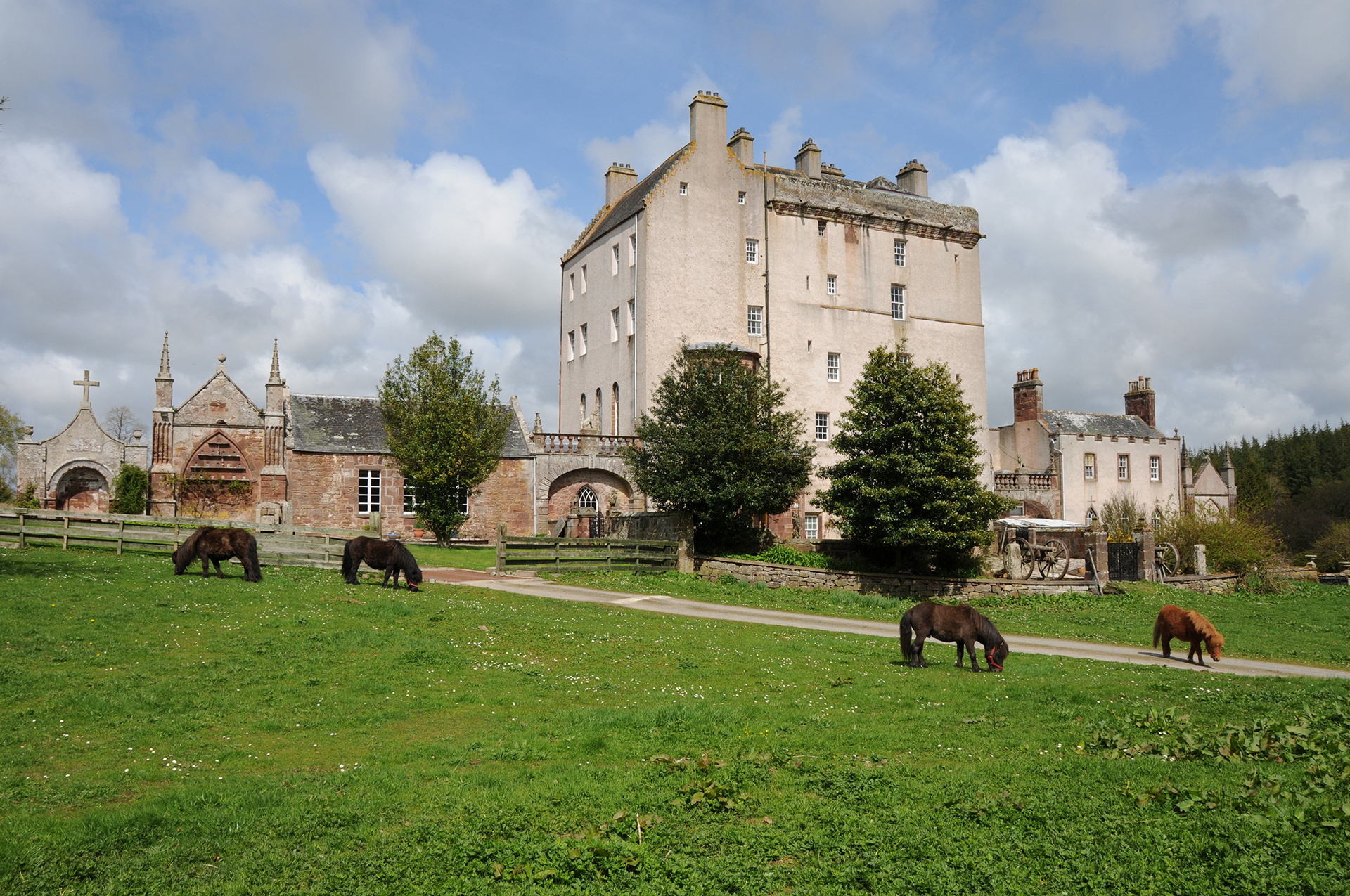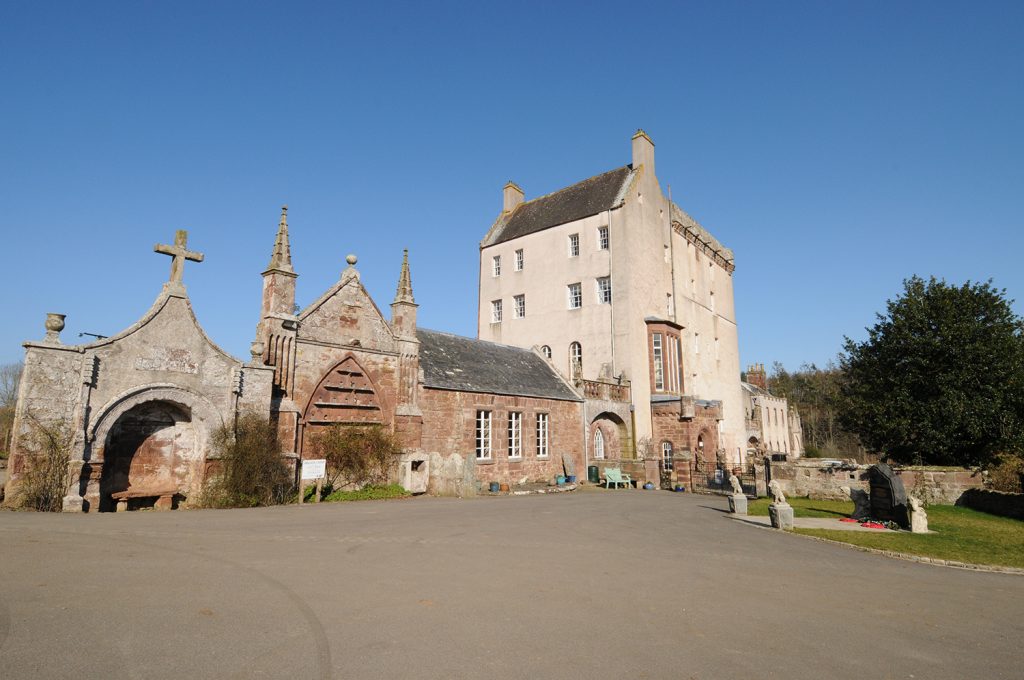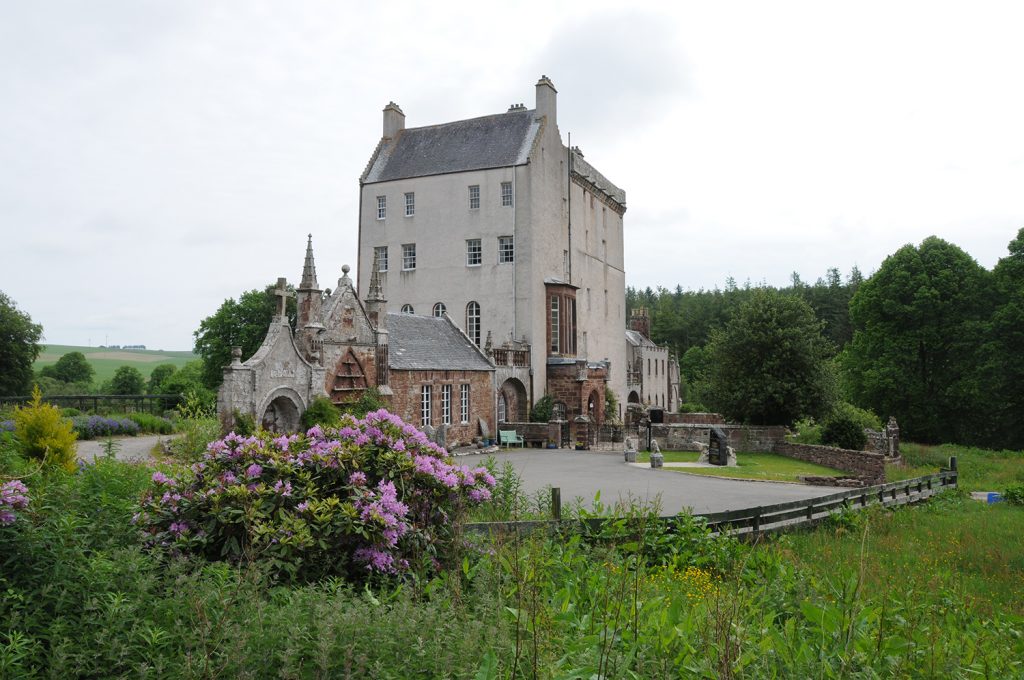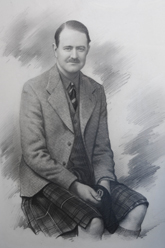
History of Delgatie Castle
Most recently the home of the late Captain John Hay of Delgatie, Feudal Baron and built around 1049 the Castle has largely been in the Hay family for the last 650 years. It was taken from the Earl of Buchan after the Battle of Bannockburn in 1314, when Robert the Bruce routed the invading English army. Mary Queen of Scots stayed at Delgatie for three days after the Battle of Corrachie in 1562. Her bedchamber is on view to the visitor.

Like many Scottish castles, Delgatie was rebuilt in the 16th century. The invention of the siege gun necessitated greater fortifications, and the 1570 rebuilding provided 8-16 feet thick walls. The main tower dates from about 1100, while its final extension with the battlement walk above the string course was completed in 1579.
In May 1639, the covenanters were routed in their first skirmish with the Royalist Gordons. This took place on the ‘Trot of Turriff’ near the castle. This proved to be the end for the ‘Royalist’ Hay of Delgatie who was hanged alongside the Earl of Montrose 11 years later in Edinburgh. In May 1661, following the restoration of Charles II, his body was exhumed and under the orders of the Lord Lyon Kings of Arms he was given a huge state funeral. Amid much pomp and ceremony he was laid to rest next to the Marquis of Montrose in St Giles Cathedral, Edinburgh.
By the beginning of this century dry rot had infected the timbers and the deadly spores had worked their way into the stonework. Part of the roof had gone and water pored down the walls.
During the second world war some of the 350,000 troops who were saved from the beaches of Dunkirk used the once elegant rooms as temporary barracks. By the end of the war the castle, left to crumble soon became derelict. Had it not been for Capt. Hay Delgatie would have disappeared for ever. Even when the architects told the Captain it was too late to save the castle his determination to transform what was a rotting heap into the show piece restoration it is today began.
Both wings were added in 1743 with the chapel and dovecote on the west and the kitchen and servants’ quarters on the east. Some of the rooms still boast their original 16th century painted ceilings, which are considered some of the finest in Scotland. Strange animals are depicted — some with human heads thought to represent the actual inhabitants of the time.
The castle is steeped in local and Scottish history and it is hoped that the condition of the castle remains near to its original state as possible making it a more ‘homely’ and different attraction to the rest of the buildings found on the Castle Trail. It is the intention of the Delgatie Trustee’s to expand the collections and exhibits each year, and to continue to improve the facilities for visitors. It is our sincere hope that you will enjoy your visit to Delgatie and decide to return, as we are certain the castle offers more than a single visit can satisfy.

Clan Hay Centre

Delgatie Castle is the Clan Hay Centre. It was touching for the Chief to talk of the enthusiasm of the late Capt. Hay who worked assiduously on behalf of the Clan Hay. His sole purpose and determination in restoring Delgatie Castle was to ensure it stayed as the Clan Hay Centre for future generations.
Delgatie Castle is open to the public every day from 10a.m. to 4p.m. and the history of the house is combined with the feel of a much loved home restored over many years by the late Capt. Hay and his wife Everild. Capt. Hay wanted the castle to be kept as his home and the Trustees of the Delgatie Castle Trust continue to carry out his wishes.
